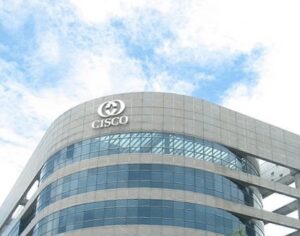
Cisco, a global leader in networking technology, recently announced a second wave of significant job cuts for 2024, eliminating 5,600 positions, or approximately 7% of its total workforce. This comes after a similar round of layoffs in February when the company let go of about 4,000 employees. These reductions are part of a broader strategy to realign the company’s focus towards artificial intelligence (AI) and other emerging technologies, as it navigates both economic pressures and the shifting demands of the tech landscape.
Background of Cisco’s Layoffs
The decision to reduce headcount reflects a growing trend among tech companies to optimize their operations in the face of declining demand and rising costs. Cisco has faced declining revenues in recent quarters, with its total revenue for the 2024 fiscal year falling by 6% year-over-year to $53.8 billion
The company’s networking equipment business, once its core strength, has struggled due to market saturation and reduced spending on IT infrastructure as companies cut back on capital expenditures.
In this challenging financial environment, Cisco is seeking to reallocate resources and streamline its operations, with a specific focus on areas it believes will drive future growth. Chief among these is AI, a sector that the company believes holds significant long-term potential as businesses and industries across the globe accelerate their digital transformations. Cisco’s CEO, Chuck Robbins, emphasized that the company is “laser-focused on growth” and efficiency, aiming to maintain competitiveness in key areas like cloud computing and cybersecurity while investing heavily in AI
A Strategic Pivot Towards AI and Cybersecurity
Cisco’s increasing focus on AI is part of a broader shift that reflects the current trajectory of the tech industry. In recent months, AI has become one of the most sought-after areas of investment, with companies racing to develop and deploy AI-driven solutions to enhance their operations and customer offerings. Cisco, known traditionally for its networking hardware, is making bold moves to diversify its portfolio by incorporating AI and machine learning technologies into its products and services.
As part of this strategic shift, Cisco has earmarked $1 billion to invest in AI startups and is actively exploring opportunities to integrate AI capabilities into its existing solutions. The company has already begun integrating AI into its collaboration tools like Webex, enhancing its functionality to include AI-powered transcription, translation, and productivity features.
Moreover, Cisco’s $28 billion acquisition of Splunk, a leading cybersecurity and data analytics firm, is seen as a key component of its AI ambitions. Splunk’s expertise in data analysis and cybersecurity will be crucial in developing AI-driven cybersecurity solutions, particularly in addressing the growing number of cyber threats that organizations face today. This acquisition not only bolsters Cisco’s AI capabilities but also strengthens its position in the rapidly expanding cybersecurity market.
The Human Cost of Transformation
Despite the promise of AI and cybersecurity, Cisco’s layoffs have created significant uncertainty and anxiety among its employees. The company’s decision to delay informing employees about the specific departments and teams affected by the layoffs exacerbated tensions within the organization. Many workers felt left in the dark for weeks, unsure of whether their jobs would be cut. This delay, combined with the growing pressures of working in a shrinking workforce, led to a deterioration of workplace morale.
Broader Industry Trends and Economic Pressures
Cisco’s layoffs are not an isolated event, but rather part of a broader trend in the technology sector, where many companies are facing similar challenges. In 2024, the tech industry has seen over 137,000 job cuts across more than 400 companies, including major players like Amazon, Google, and Microsoft. Many of these companies, despite reporting strong financial results, have initiated layoffs as they restructure their operations to focus on emerging technologies such as AI and cloud computing.
The economic pressures driving these layoffs stem from a variety of factors, including rising interest rates, inflation, and a slowdown in global economic growth. As companies face increasing operational costs, they are being forced to make tough decisions to remain competitive. For Cisco, this means cutting jobs while redirecting resources towards areas that promise future growth, such as AI, automation, and cybersecurity.
AI’s Role in Cisco’s Future
Cisco’s commitment to AI goes beyond merely integrating AI capabilities into its existing products. The company is positioning itself as a leader in AI-driven innovation, with plans to develop new AI-powered solutions for its customers across industries. For instance, AI can be used to optimize network performance, enhance security protocols, and improve customer experiences through more intelligent and responsive systems.
One of the key areas where Cisco sees potential is in AI-driven automation. As networks become increasingly complex with the rise of 5G, Internet of Things (IoT) devices, and cloud computing, businesses are looking for ways to automate network management and reduce the need for manual intervention. Cisco’s AI-driven solutions will enable organizations to automate routine tasks, such as monitoring network traffic, identifying potential issues, and deploying security updates in real time.
In addition to automation, AI is also playing a pivotal role in Cisco’s cybersecurity strategy. By leveraging AI and machine learning algorithms, Cisco aims to improve its ability to detect and respond to cyber threats in real time. This is particularly important as cyberattacks become more sophisticated, targeting critical infrastructure and sensitive data. With the acquisition of Splunk, Cisco will be able to combine its networking expertise with Splunk’s data analytics capabilities to deliver AI-driven cybersecurity solutions that offer faster and more accurate threat detection and response.
The Path Ahead: Balancing Efficiency with Innovation
While the job cuts represent a difficult moment for Cisco, the company remains optimistic about its future. By focusing on AI and emerging technologies, Cisco hopes to position itself as a leader in the next wave of digital transformation. The company’s investments in AI, cloud, and cybersecurity are designed to drive innovation and create new revenue streams, even as its traditional networking business faces challenges.
However, Cisco’s ability to balance its need for efficiency with its commitment to innovation will be critical in determining its long-term success. The company must navigate the tension between cutting costs and investing in new growth areas, all while maintaining the trust and engagement of its workforce. As Cisco moves forward with its restructuring plan, it will need to ensure that its employees feel supported and valued, particularly as it asks them to embrace new technologies and ways of working.
Cisco’s recent job cuts are a reflection of the broader challenges facing the tech industry, as companies seek to adapt to changing market conditions and technological advancements. By focusing on AI and cybersecurity, Cisco is betting on its ability to innovate and remain competitive in a rapidly evolving landscape. However, the company’s success will depend on its ability to execute this vision while managing the human and organizational impacts of its restructuring efforts.


